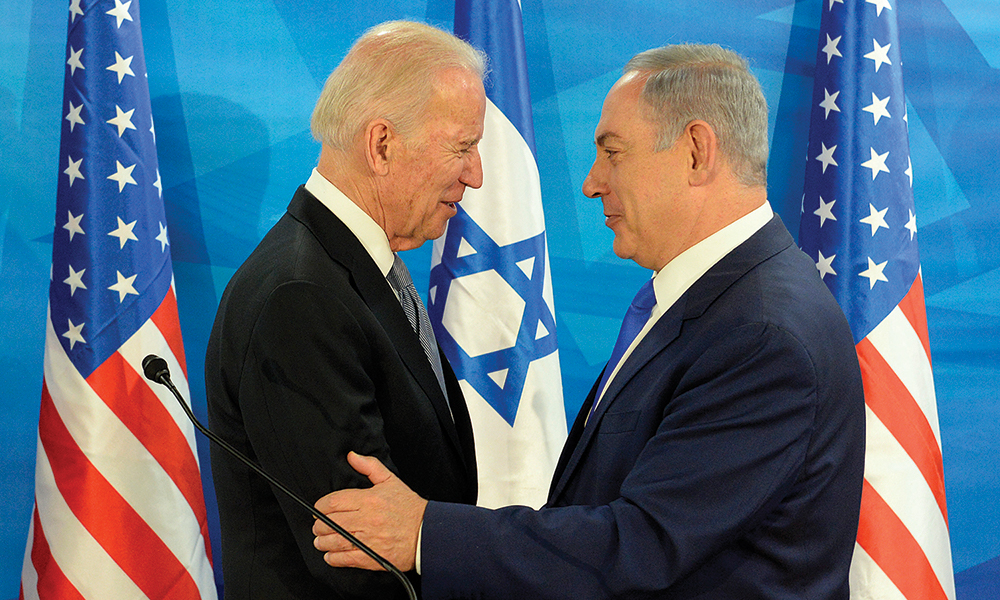The Sunni extremist group in Syria and Iraq could cause turmoil in the entire Middle East.
By Daniel Benjamin
Only 18 months after the last U.S. troops departed the country, public attention is again riveted on Iraq. The sudden fall in June of Mosul, Iraq’s second-largest city, to a Sunni extremist group called Islamic State in Iraq and Syria (ISIS) plunged the region back into crisis. ISIS clearly poses a significant long-term danger to Iraq. Over the long term, it could also pose a real threat to the region, including Israel, from the territory it now controls.
Along with other jihadist groups involved principally in the Syrian civil war, ISIS has made a vast swath of territory—stretching from Fallujah to Aleppo in Syria—an ungoverned space and terrorist safe haven. As we’ve learned in recent decades, above all in the 1990s, a large area that cannot be policed affords terrorists a chance to plan and organize. Although not as large as Afghanistan under the Taliban, the new safe haven that has been dubbed “Sunnistan” presents an enormous and profound security challenge.
What is ISIS? And what kind of threat does the group present to the Middle East in general and Israel in particular?
The organization is a lineal descendant of the original al Qaeda in Iraq, established shortly after 2003 in the vacuum created by the fall of Saddam. Its first leader, the Jordanian Abu Musab al Zarqawi, had trained in the 1990s in al Qaeda camps in Afghanistan, but when he set up shop in Iraq, he largely ignored guidance from the al Qaeda “core” in Pakistan. Instead, he set about exploiting growing sectarian grievances in Iraq, where an Arab Sunni minority had ruled over a Kurdish minority and a much larger Arab Shia majority. Zarqawi believed that the Iraqi state could be destroyed through a civil war, and that, in turn, would allow Sunnis to claim a significant part of the country. There, they could create a true radical Islamist nation that could be a launching pad for a new caliphate, a superstate that would recreate the religious and political unity of the early days of Islam.
Zarqawi came close to achieving his goal of a divided Iraq. But he was killed in an airstrike in 2006, just before U.S. forces enlisted disaffected Sunni tribes to put down the rebellion that was tearing the country apart. Zarqawi’s vision, however, endured. His organization survived and rebuilt itself in Syria, where it took up arms against the Assad regime, which is dominated by the small Alawite sect, a distant cousin of Iran’s “Twelver” Shiism. With significant support from Sunnis who support the overthrow of the Damascus regime, as well as resources gathered through bank robberies and looting on both sides of the Syria-Iraq border, the renamed ISIS, under the leadership of a shadowy figure named Abu Bakr al Baghdadi, has built itself back up into a formidable fighting force.
It is often said that ISIS was too violent for al Qaeda, which is why the core group in effect disavowed the Iraqi affiliate. In fact, what bothered Osama bin Ladin and his successor Ayman al Zawahiri was above all the group’s violence against other Muslims. Al Qaeda has had a deep vein of anti-Shia sentiment since the beginning, but the leadership preferred to focus on targeting the West or what it considered apostate Muslim leaders rather than engage in large-scale intra-Muslim killing. Zarqawi, and now Baghdadi, have shown no such scruples.
Beyond Iraq and Syria, the group’s greatest threat will likely be to Iraq’s Arab neighbors. Already, the group has seized checkpoints on the Jordanian border. The desire to strike at Assad’s allies in Lebanese Hezbollah may have also prompted the group to infiltrate Lebanon: In late June, 17 ISIS members were reportedly arrested in Beirut. And extended operations in Jordan could have a significant effect on regional stability, including on Israel, which has close security ties with Jordan.
ISIS shares with other jihadi groups a visceral hatred for both the United States and Israel. U.S. sources say the group has begun thinking about attacks against American targets, which would yield it tremendous admiration among extremists. From its bases in Syria, the group could also possibly carry out some kind of attack against Israel. Although Israeli border defenses and intelligence capabilities would make this difficult, provocation along these lines might well seem attractive for a group such as ISIS, although it would require resources the group might prefer to use elsewhere.
Up to now, Israel has largely been spared al Qaeda-related violence at home, although Israeli tourists are sometimes targeted abroad. (Israeli tourists were attacked in Kenya in 2002, and the suspect in the attack on the Jewish Museum in Brussels in June appears to have been trained by Syrian-based extremists.) Much of the reason al Qaeda never got a foothold in the West Bank or Gaza is that Palestinian security forces—whether they cooperate with Israel, as in the West Bank, or not—believe that a catastrophic attack against Israel would ultimately undermine their efforts for independence. Israel, they believe, would take draconian measures to root out extremists, and that would have inevitable unwanted effects on them.
It is unlikely that ISIS or other jihadists operating from Iraq or Syria will soon be able to strike Israel. But the effectively layered defense that Israel has enjoyed thus far will not help against this particular threat. Shrinking the safe haven of Sunnistan and preventing the terrorists within it from carrying out attacks against the United States or other targets is already a high priority for Washington. The need to ensure that they also cannot mount operations against Israel—which would vastly increase the complexity and danger of the situation—adds another element of urgency to a spreading crisis.
Daniel Benjamin is director of the John Sloan Dickey Center for International Understanding at Dartmouth. He served as ambassador-at-large and coordinator for counterterrorism at the U.S. State Department from 2009 to 2012.















